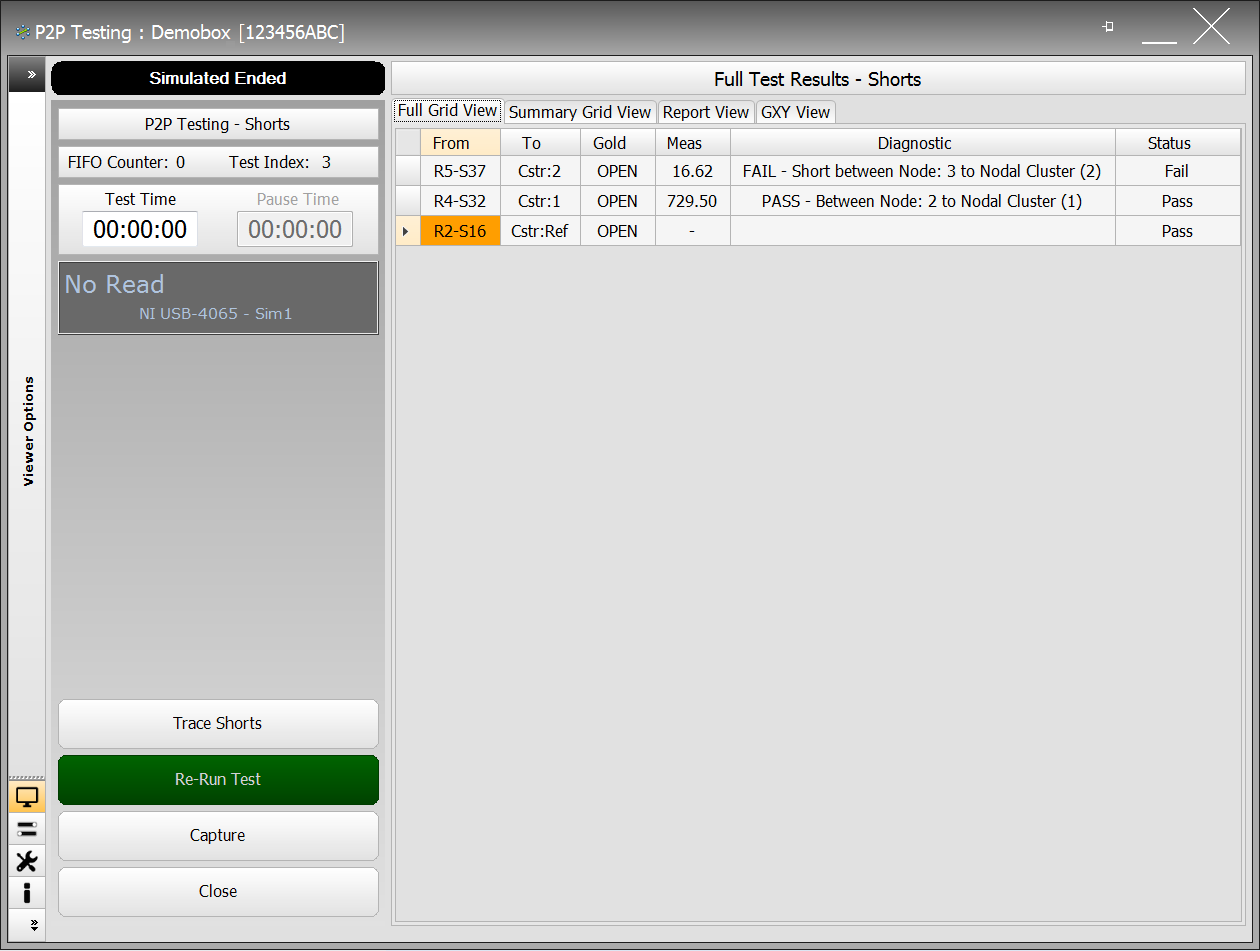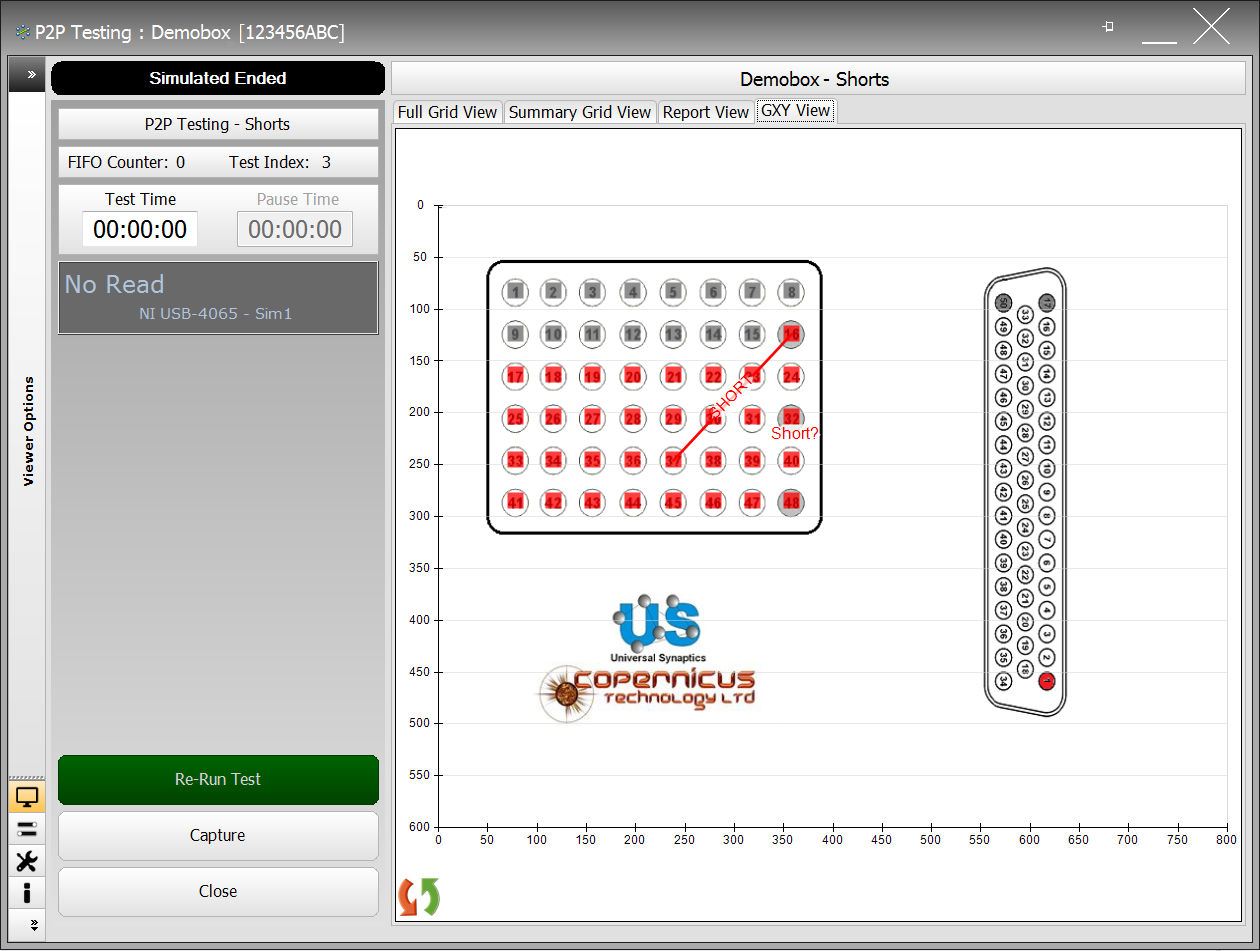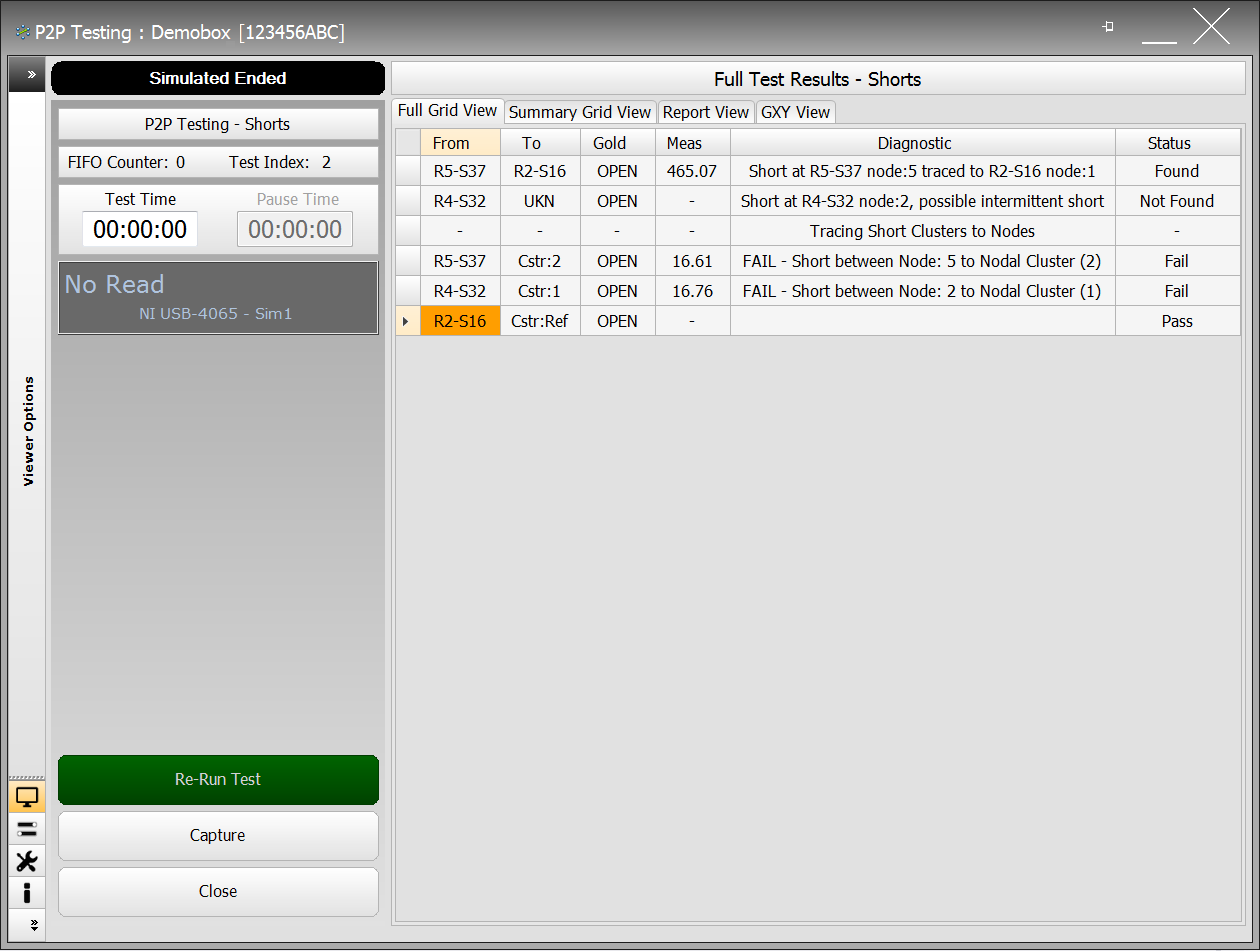Trace Testing
The Trace test is used to determine the actual nodes that are shorted, as found by the Shorts Test. This specific test is needed because the Shorts test accumulates the nodal ground together into clusters, and so if a short is found, it cannot immediately be determined which nodal the current test node is shorted to; the Trace test is a longer test that performs a more in depth search for the shorted nodes. This test only becomes available if faults are found during a Shorts Test and the Trace Shorts button appears on the Shorts Test application.

This example is a UUT called 'Demobox' with 3 nodes, numbered 1,2 and 3, and their nodal grounds assigned to TP16, TP32 and TP48.
Trace - Example
A Shorts test was carried out on the UUT called Demobox. This UUT has 3 nodes, numbered 1,2 and 5, and their nodal grounds assigned to TP16, TP32 and TP37.
During the test, there where two shorts found, and so the Trace test was carried out. In this example one of the shorts was traced and the other one was not; the latter of these shorts is perhaps a transient short. For the short that was traced, the GXY shows a red link, with the word 'SHORT' in the middle of the lines, between the two nodal grounds suspected to be shorted together. For the short that could not be traced, the phase 'Short?' is written underneath the nodal ground suspected to have a short.

Trace - Example (con't)
In the example above, the entries the Full Grid View, is from the test data from the Shorts test, and the test data from Trace test. It shows in the initial 3 entries, the first node being set as the reference, and then Cstr:1 and Cstr:2 both having shorts. The entries at the top of the Full Grid View show how the Trace test has endeavoured to trace the shorts to a specific node; one of these shorts was NOT traced and is deemed a possible intermittent short.
